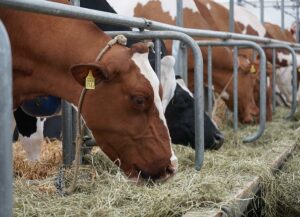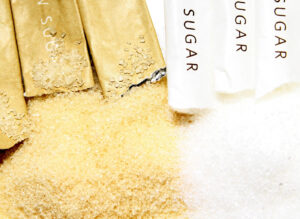Fernando Diaz
Emulsifiers are amphiphilic substances capable of mixing lipids and water. In nonruminant animals, feeding emulsifiers has been shown to increase growth, feed efficiency, and nutrient absorption. In ruminants, emulsifiers have the potential to affect rumen fermentation making fatty acids more available for biohydrogenation and increasing their passage to the small intestine through association with the liquid phase. Research studies on using emulsifying agents as feed additives for dairy cows is very scarce.
A recent study conducted at the Ohio Agricultural Research and Development Dairy Center, The Ohio State University, evaluated the potential use of an emulsifier as a feed additive on ruminal fermentation and production performance in lactating dairy cows.
The researchers (Lee et al., 2019) supplemented a basal diet [55% forage on a dry matter (DM) basis] with a low (0.05% DM) or high (0.075% DM) level of a commercial emulsifier based in hydrolyzed soy lecithin containing phospholipids and free fatty acids as well as lysophospholipids (6%). Protein, fat and energy concentration in the diets was 16.5% DM, 4.1% DM, and 1.62 Mcal/kg.
The results, published in Journal of Dairy Science, showed positive effects in cow production performance. In summary:
- Supplementation of the diet with the emulsifier did not affect DM intake (21.4 kg/day) but improved milk production considerably.
- Increasing emulsifier inclusion in the diet linearly increased milk (from 30.7 to 32.4 kg/day), 4% fat-corrected-milk (from 29.7 to 31.6 kg/day), and energy-corrected-milk yield (from 28.0 to 29.8 kg/day).
- Feeding the additive did not alter milk fat (3.35%) and protein content (3.16%) but increased milk fat (from 1.01 to 1.11 kg/day) and milk protein production (from 0.97 to 1.04 kg/day).
- As a result, feed efficiency increased by 5%.
- The emulsifier did not affect average ruminal pH (5.73), and ammonia (11.5 mmol/L) and total volatile-fatty-acid (VFA) concentration in the rumen (134.2 mmol/L). However, inclusion of the emulsifier in the diet reduced acetate and increased valerate as proportion of total VFA.
In conclusion, this study reported that lysophospholipid-based emulsifiers can be used as feed additives for increasing milk production and feed efficiency in lactating dairy cows.
Reference
Lee, D. L. Morris, J. E. Copelin, J. M. Hettick, and I. H. Kwon. 2019. Effects of lysophospholipids on short-term production, nitrogen utilization, and rumen fermentation and bacterial population in lactating dairy cows. J. Dairy Sci. 102:3110–3120.
© 2019 Dairy Knowledge Center, LLC. All Rights Reserved.










